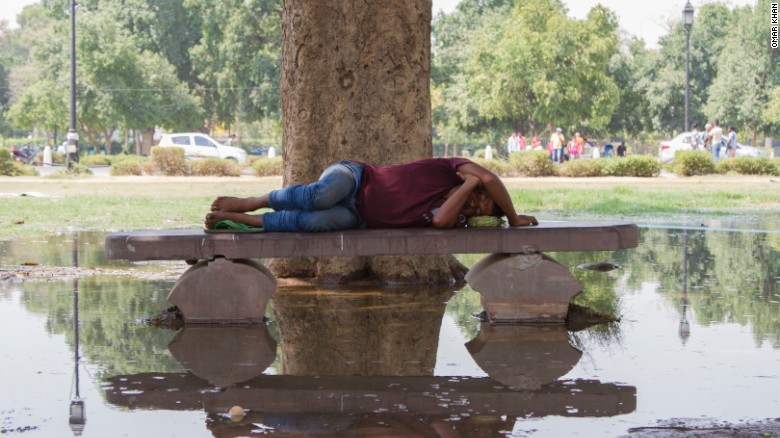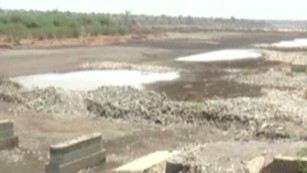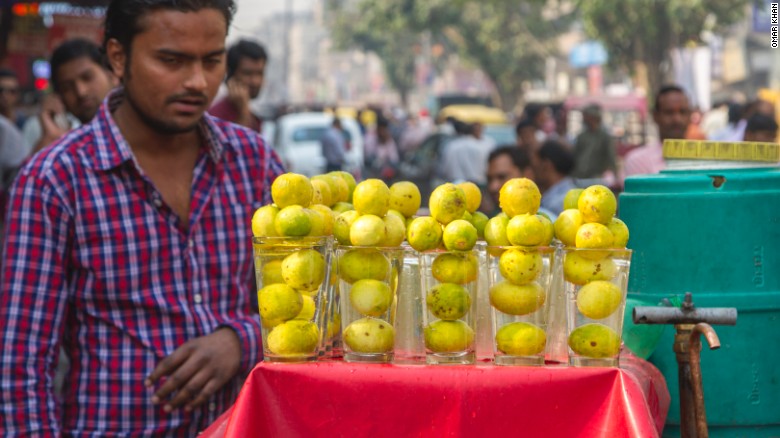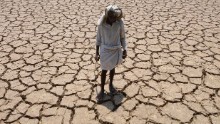Mercury rising: India records its highest temperature ever
India recorded its highest-ever temperature on Thursday when the heat in the town of Phalodi, in the western state of Rajasthan, shot up to a burning 51 degrees Celsius (123.8 degrees Fahrenheit).
It was the second day in a row the town experienced temperatures in excess of 50 degrees Celsius.
Other towns in the state, such as Churu, also recorded highs of about 50 degrees Celsius (122 degrees Fahrenheit) the same day.
In New Delhi, the capital, the temperature reached nearly 47 degrees Celsius on Wednesday.
Monsoon may not solve India's drought crisis
The previous temperature record in India was held by Alwar, also in Rajasthan, at 50.6 degrees Celsius (123.1 Fahrenheit) in 1956. According to the Guinness Book of World Records, the highest temperature ever was recorded at 56.7 degrees Celsius (134 degrees Fahrenheit) in Death Valley, California, on July 10, 1913.
Rajasthan, home to the Thar desert, typically records the highest temperatures in India. Temperatures can soar as a result of incoming western winds from hot areas.
Red alert issued
The IMD has issued a red-level alert for Rajasthan as well as for other states like Madhya Pradesh and Gujarat, where temperatures, despite not having crossed the 50-degree mark, are higher than average.
India has recorded higher than normal temperatures throughout 2016.
Many areas are experiencing severe heat waves and state governments estimate more than 370 people killed so far.

India recorded its highest ever temperature on Thursday, in Phalodi, Rajasthan, where numbers shot up to a burning 51 degrees Celsius (123.8 degrees Fahrenheit)
This comes on the back of a searing 2015, when more than 2,500 died in the summer. 2015's high casualty rate has led to India's National Disaster Management Authority coordinating with states on heat wave action plans to spread awareness and establish preventative measures.
Killer heatwave wreaks havoc in Southeast Asia
Double whammy of heat wave and drought

Heatwave hits India amid worst drought in decades
The heat wave has also coincided with another major environmental problem: drought.
After two successive below-average monsoons in 2014 and 2015, ground water levels have receded, impacting many rural Indians who rely on ground wells for drinking water.
The western Indian state of Maharashtra is one of the worst impacted, with the state government organizing emergency 'water trains' to bring daily supplies to villages.
The double whammy of heat and drought has led to accidents and fatalities.
On Monday, five men died in the northern state of Haryana when they attempted to restore a well that had fallen into disuse.
Authorities say the men were killed when they inhaled poisonous gas trapped in the well.

India's meteorological department says the heat wave will continue into next week
India's meteorological department says the heat wave will continue into next week. Many schools across the country have been operating on shortened days.
2015: Indian men marry marrying multiple wives to help beat drought
The monsoons are expected to hit India in June, bringing much-needed rain and relief. The 2016 monsoons are forecast to bring an above-average amount of rainfall.
Unrelated to the annual monsoons, large parts of Sri Lanka and now southern India have been lashed this week by rains caused by a tropical depression in the Bay of Bengal.
News Courtesy: www.cnn.com











